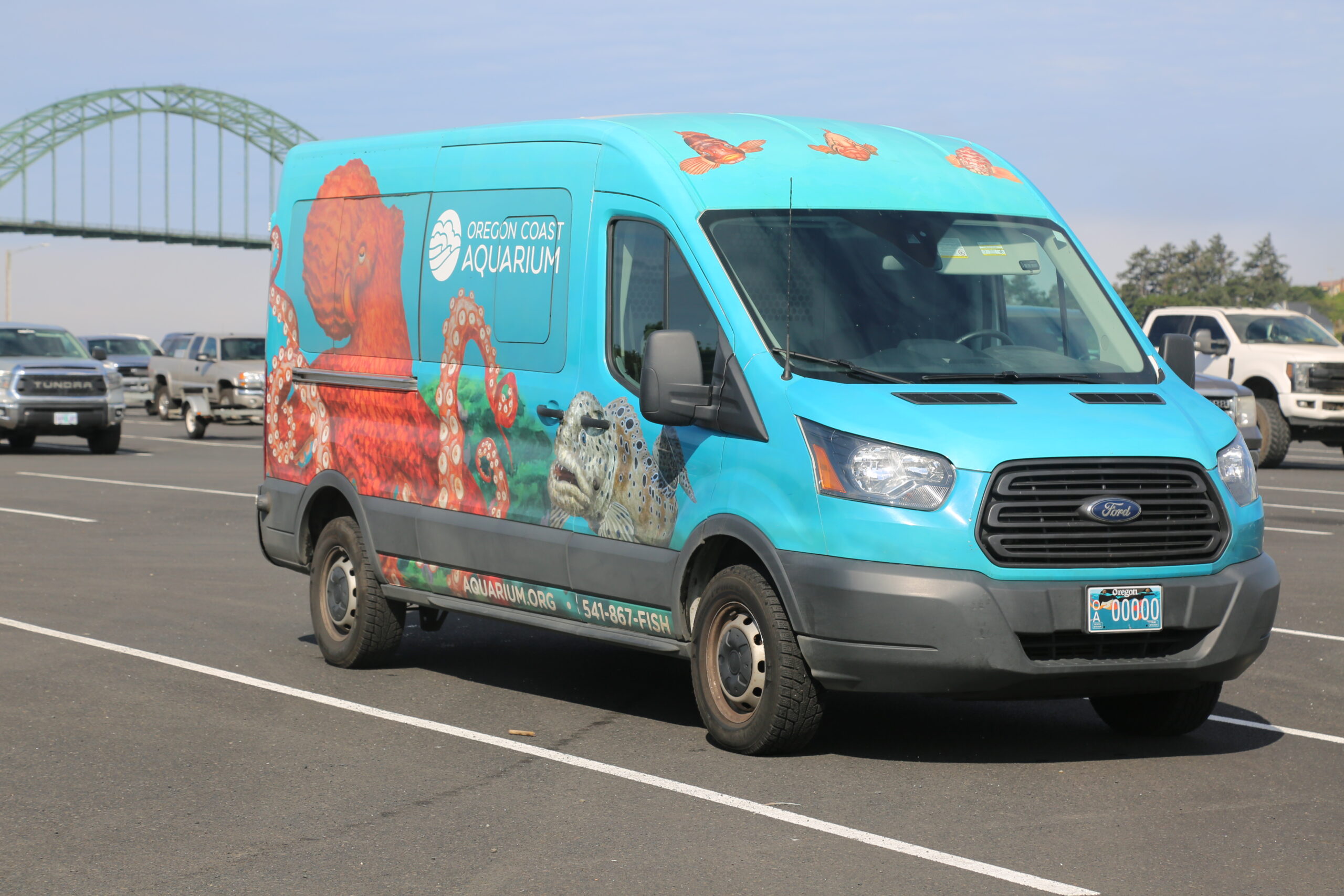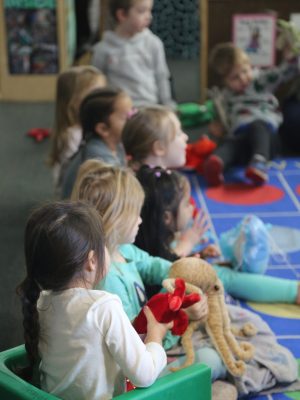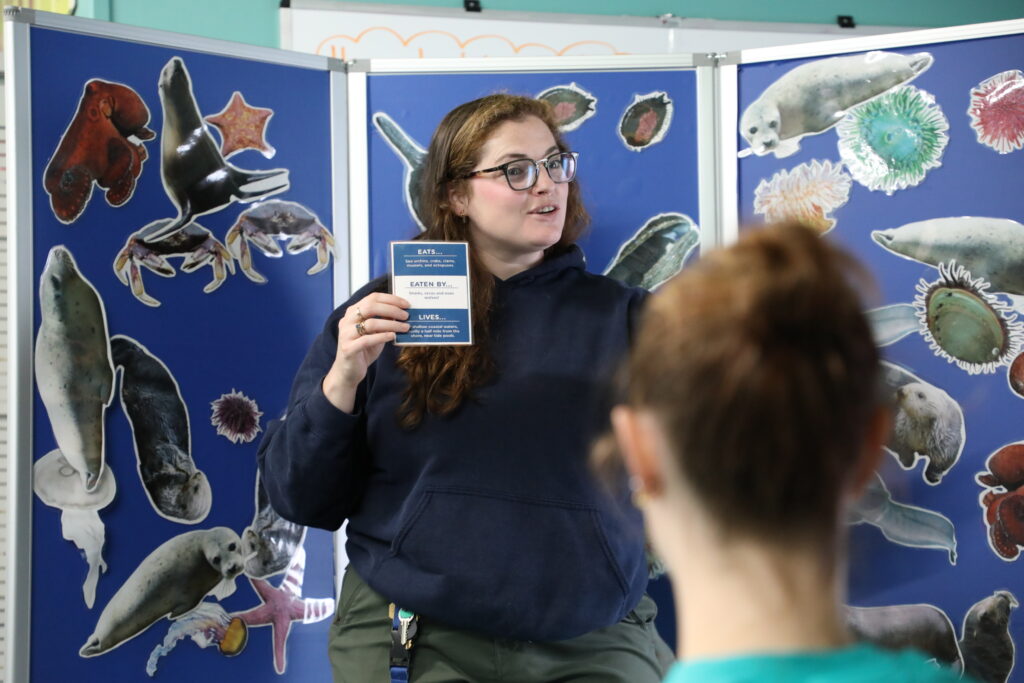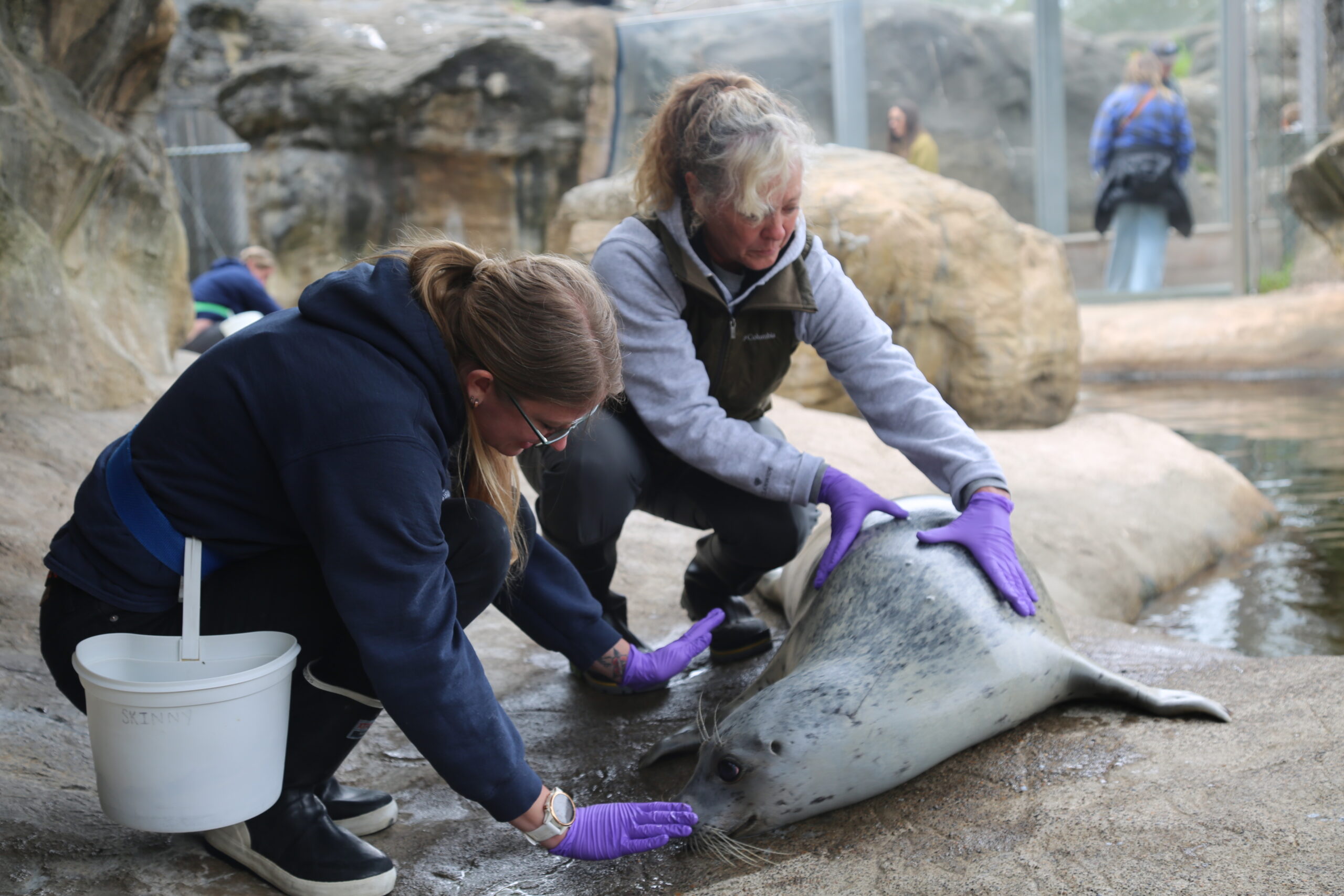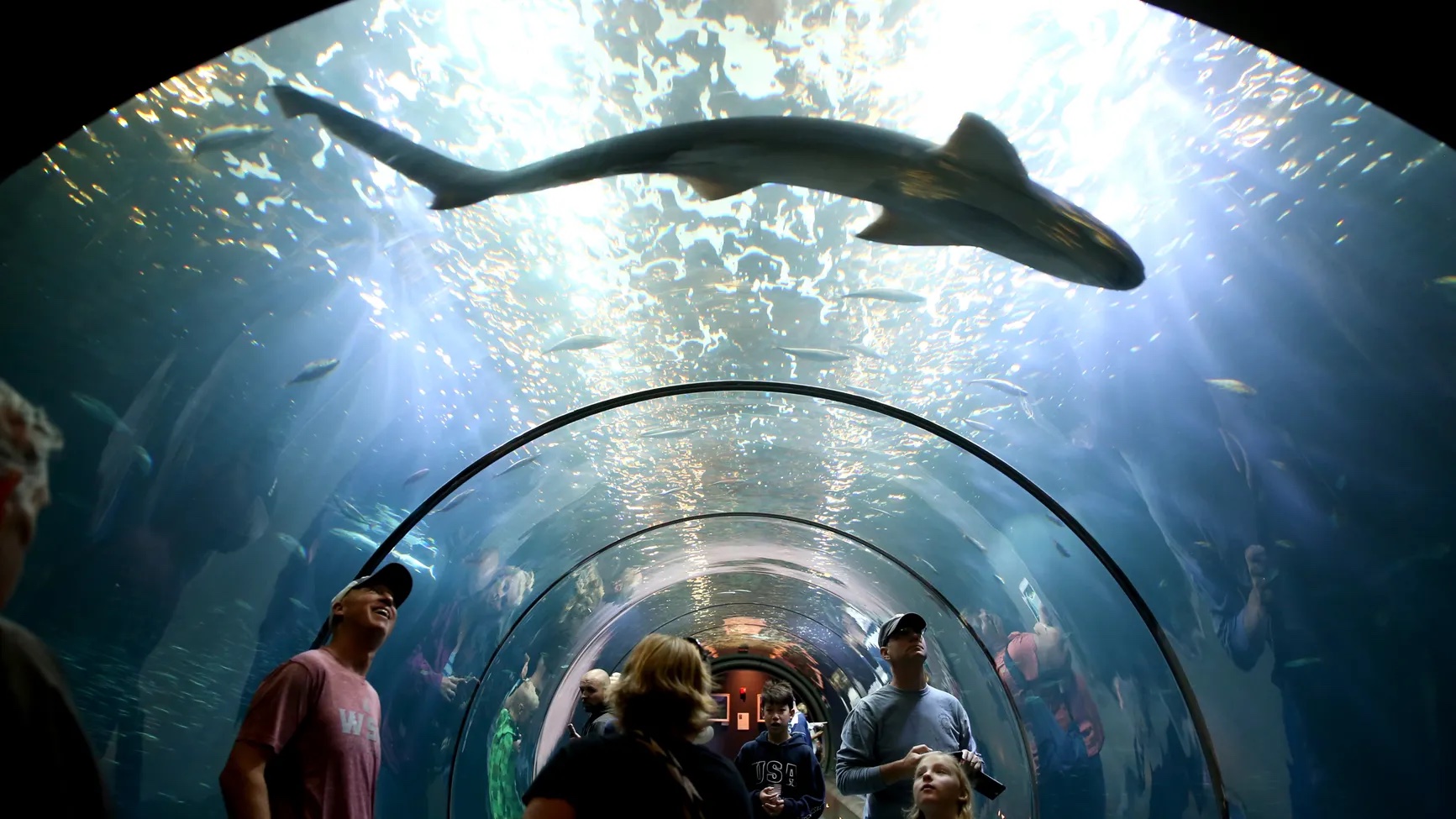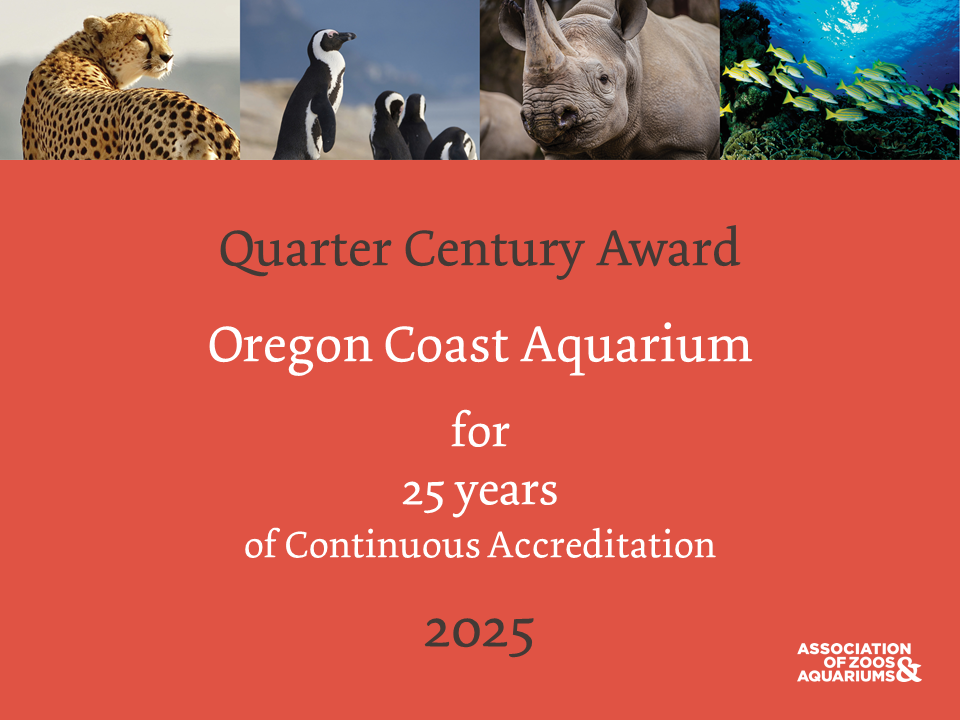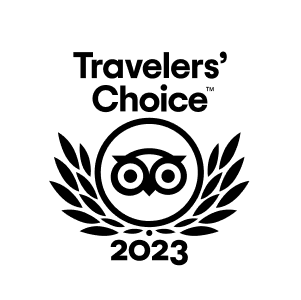The Oregon Coast Aquarium (OCAq) offers a multitude of learning opportunities. From a variety of marine life exhibits to daily educational presentations to behind-the-scenes encounters, there are plenty of ways visitors can make connections with the ocean and its ecosystems. But for people who can’t travel to Newport to experience the wonder of the Aquarium in person, OCAq offers outreach opportunities to take the wonder to them.
Marina Astin is OCAq’s Manager of Learning and Engagement, overseeing all the outreach programs geared toward fulfilling the mission of creating unique and engaging experiences that connect people with the coast, and, ultimately, inspiring ocean conservation.
For years, OCAq staff went out and facilitated large assemblies in schools around Oregon, but those came to an abrupt halt during the COVID health crisis.
That downtime gave the Aquarium a chance to evaluate its outreach efforts and make some improvements. The most significant of these was a change from a large assembly format to a more hands-on approach in classroom settings.
“I love it,” said Astin. “We might reach fewer students at a time, but the interactions feel more meaningful. The kids get to do a lot more and be hands-on — they’re touching things, they’re seeing things up close. It’s also great because it gives them plenty of opportunities to ask questions in a back-and-forth conversation, which is something the large presentations didn’t allow for.”
These Aquarium programs have always appealed to elementary school students, but over the last year the OCAq Mission Engagement team has focused on creating experiences for middle and high school students as well, rolling out new opportunities as school gets underway this fall.
“We’ve taken a closer look at how to best reach kids in different grades, the standards teachers are aiming for, as well as existing curriculum and how can we support that. We want to help kids see through a different lens and apply the knowledge and skills that they’re actively building,” Astin said. While it’s always fun to work with younger audiences, Astin expressed an appreciation for expanding their programs. “It’s eye-opening and inspiring to work with older kids because that’s the age where you start to more broadly about how you fit into the world and what you can do to leave your mark.”
Beyond the Aquarium
All the programs that take place in settings other than the Aquarium itself are overseen by Kathleen Hackett, OCAq’s Community Engagement Specialist. She just finished a busy summer, presenting programs at around two dozen libraries and other facilities in Oregon. Now she’s gearing up for school presentations.
“I think the biggest things about these programs is they’re really growing, and we’re here for the students, educators, and community,” Hackett said. “We’ll come to you, align with your standards, and build a connection with the Aquarium and, by extension, the ocean— that’s our goal, always.”
Hackett said it’s very rewarding to observe students making connections during these hands-on learning opportunities. “It’s nice to see those little ‘aha’ moments that maybe they would have made later in life, but they can have them now because of these programs,” she said.
The programs are tailored specifically for various age groups. Elementary students, for example, may experience a program called “Fill the Bill,” which talks about the different beaks that shore and seabirds have, and how they feed themselves in the wild. And then students get to try it themselves.
“I’ll have a tub with sand and water in it, and the kids have to use different tools to get all the different food,” Hackett said. “So you might have a colander because a bird like a pelican scoops their prey up and then releases all the water.”
For older students, presentations are a bit more subject based, tying into things like chemistry, physics or human impacts on the environment; they even delve into career connections.
Astin said the Aquarium also offers curriculums that teachers can use themselves in schools, but for these outreach presentations, “we wanted to make sure that when we visit we are bringing something unique.
All the programs are related to the ocean in some way, shape or form. Everything connects back to the Oregon Coast or the Aquarium.”
“Outreach lets us build meaningful connections with our coastal community,” said Astin. “And it lets us bring a little bit of the coast to those who might not otherwise have the chance to experience it.”
Learn more about or book one of OCAq’s outreach programs by visiting aquarium.org/education.

